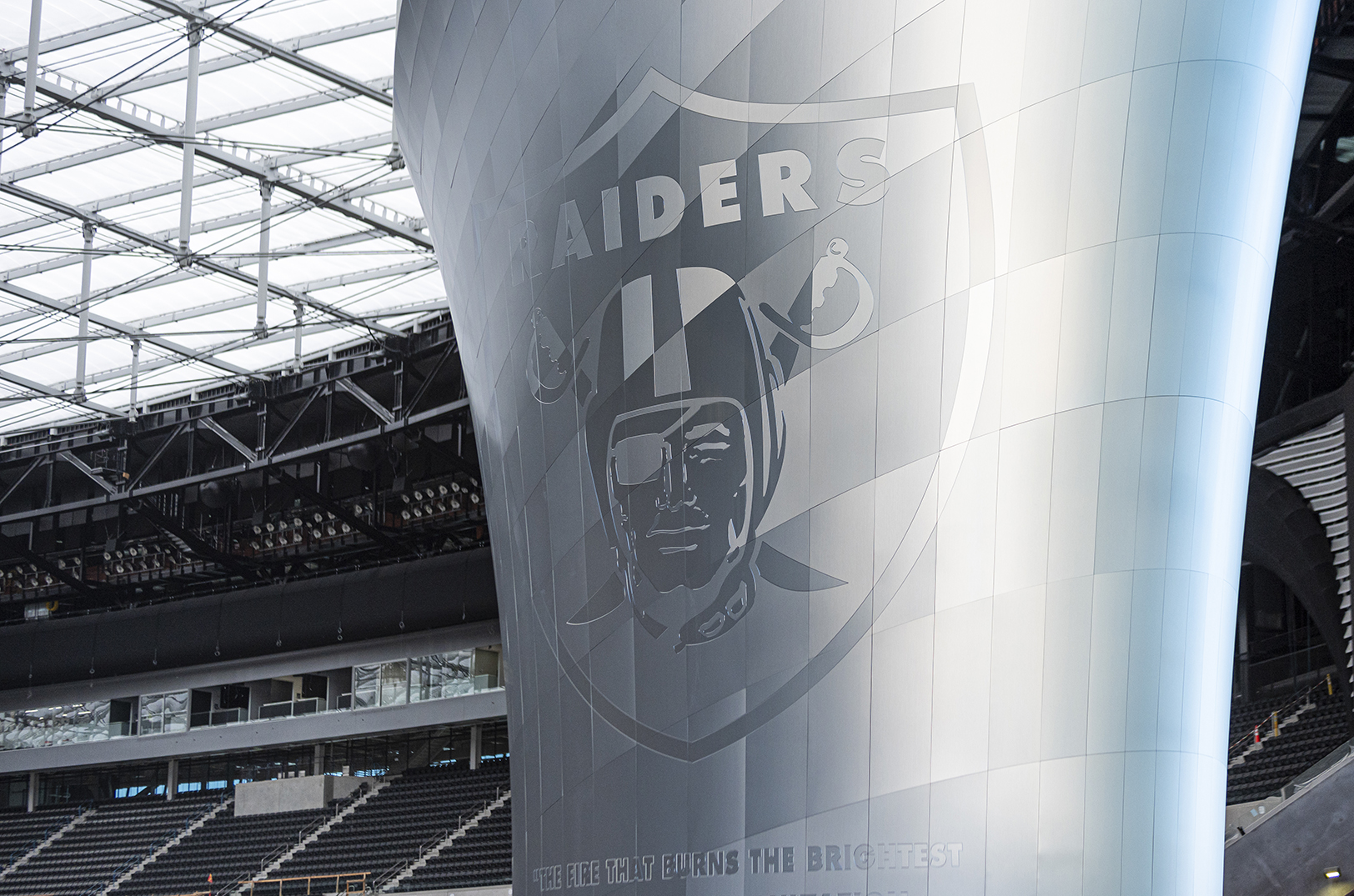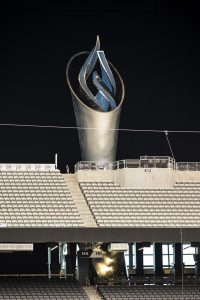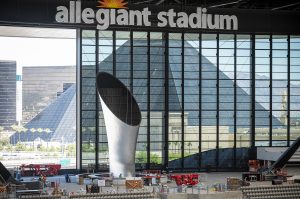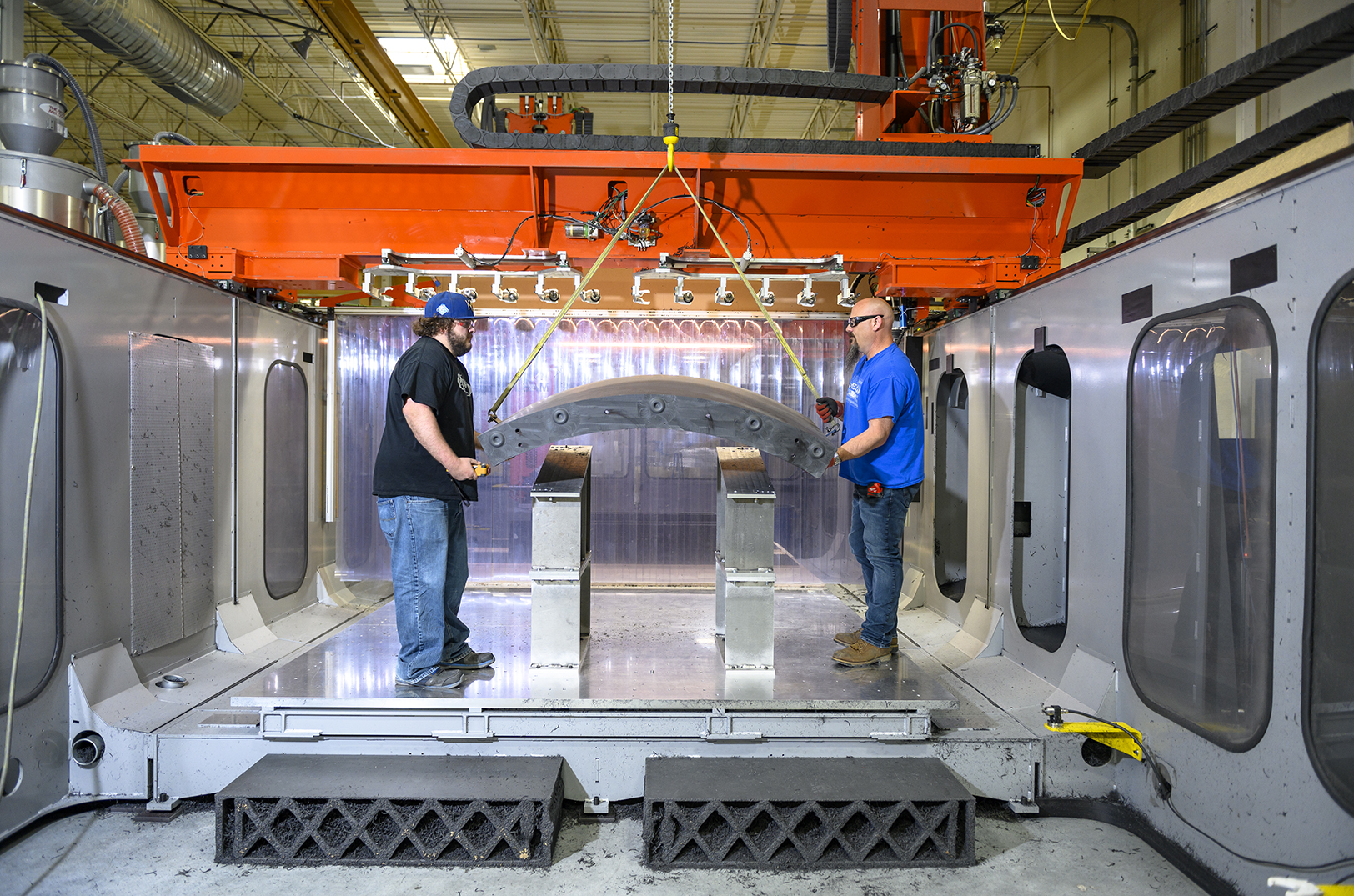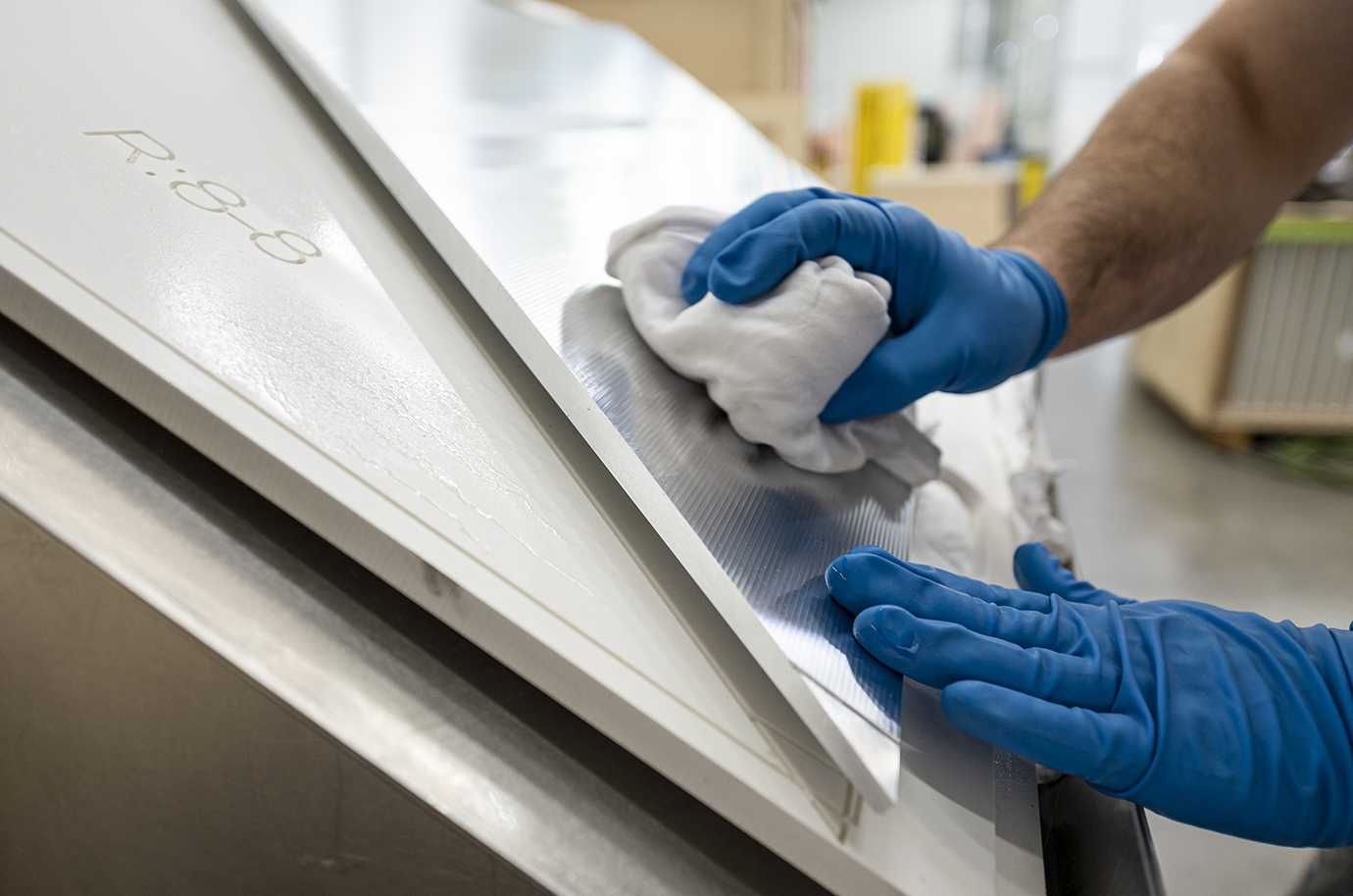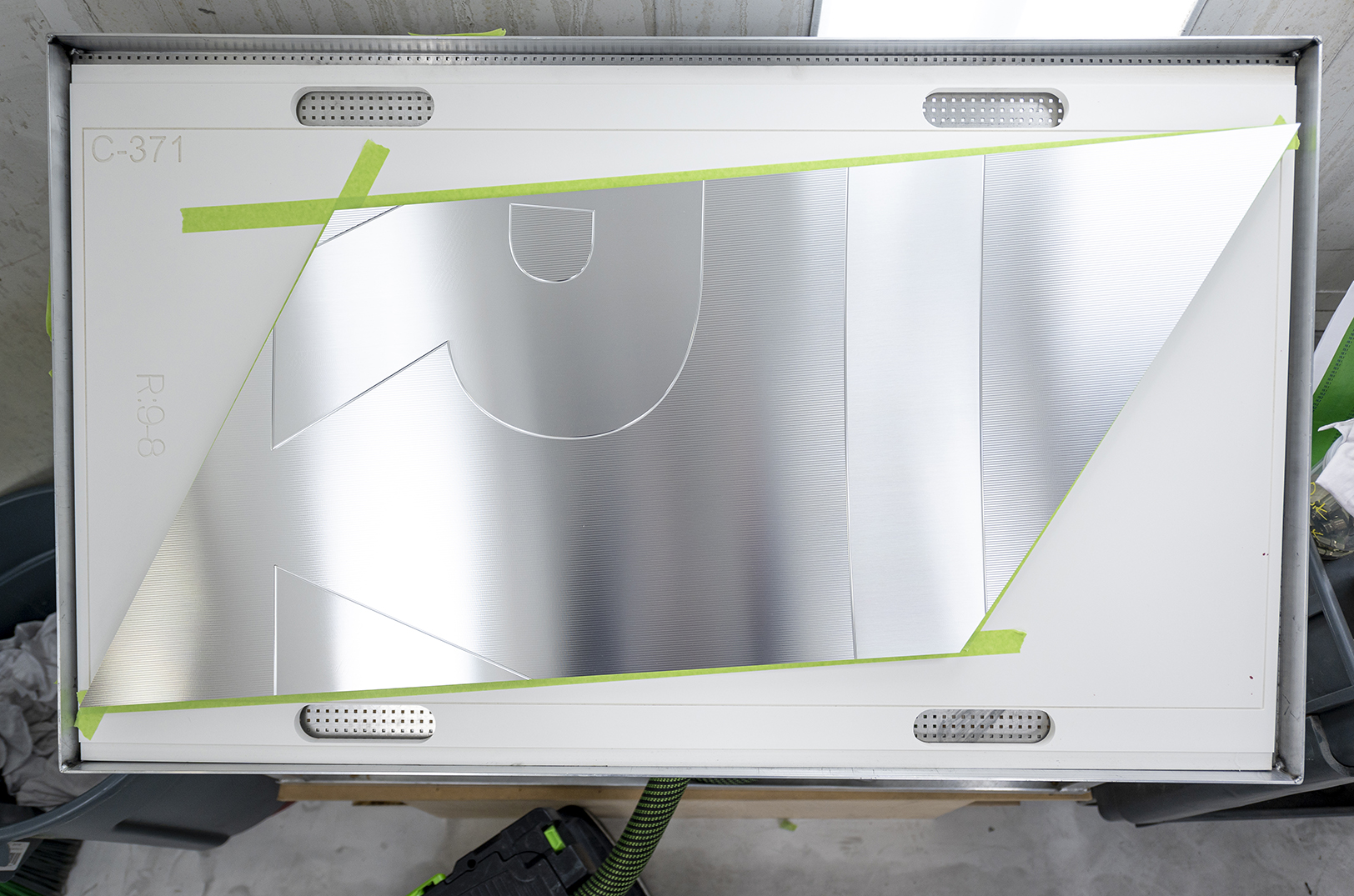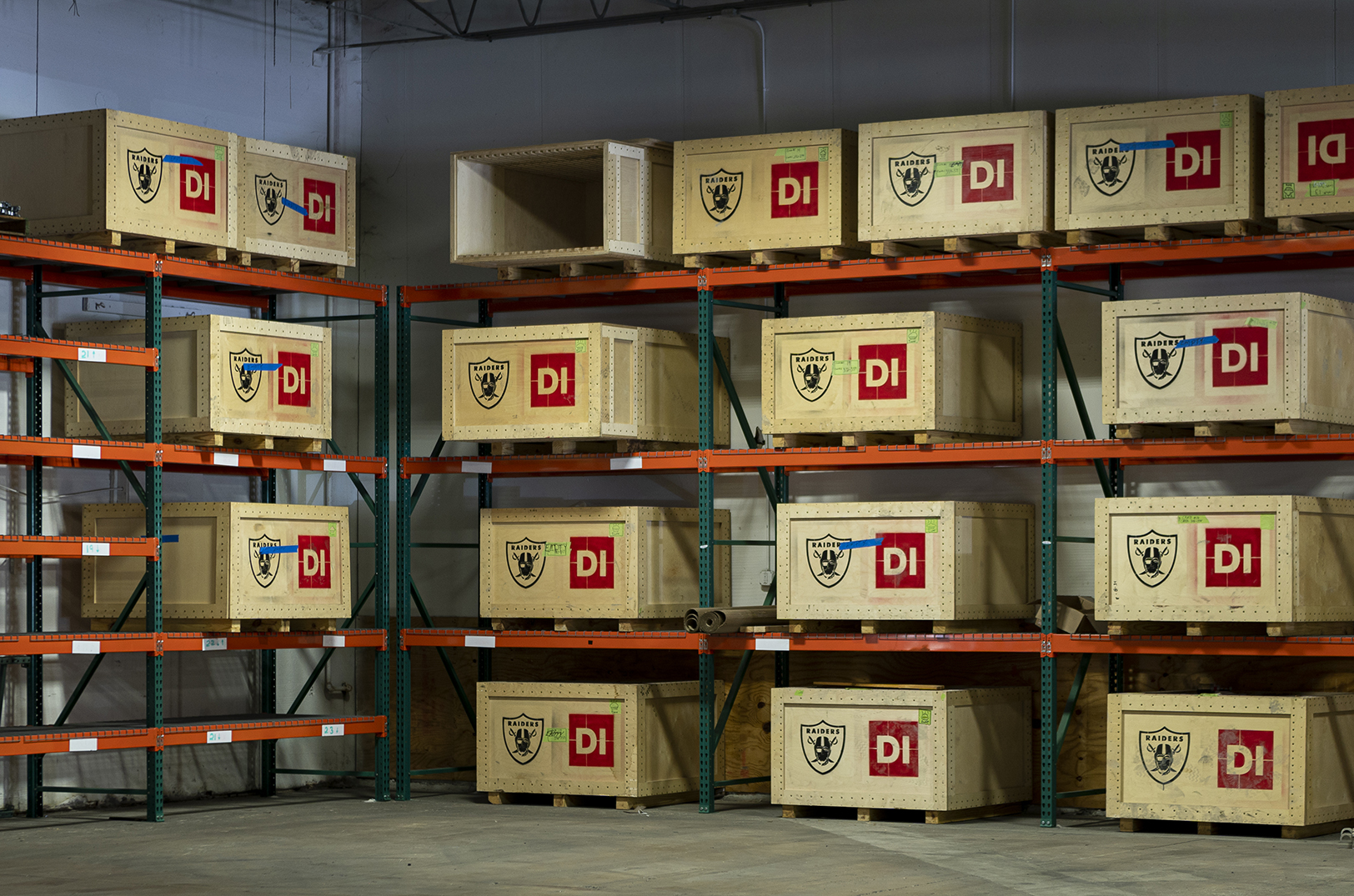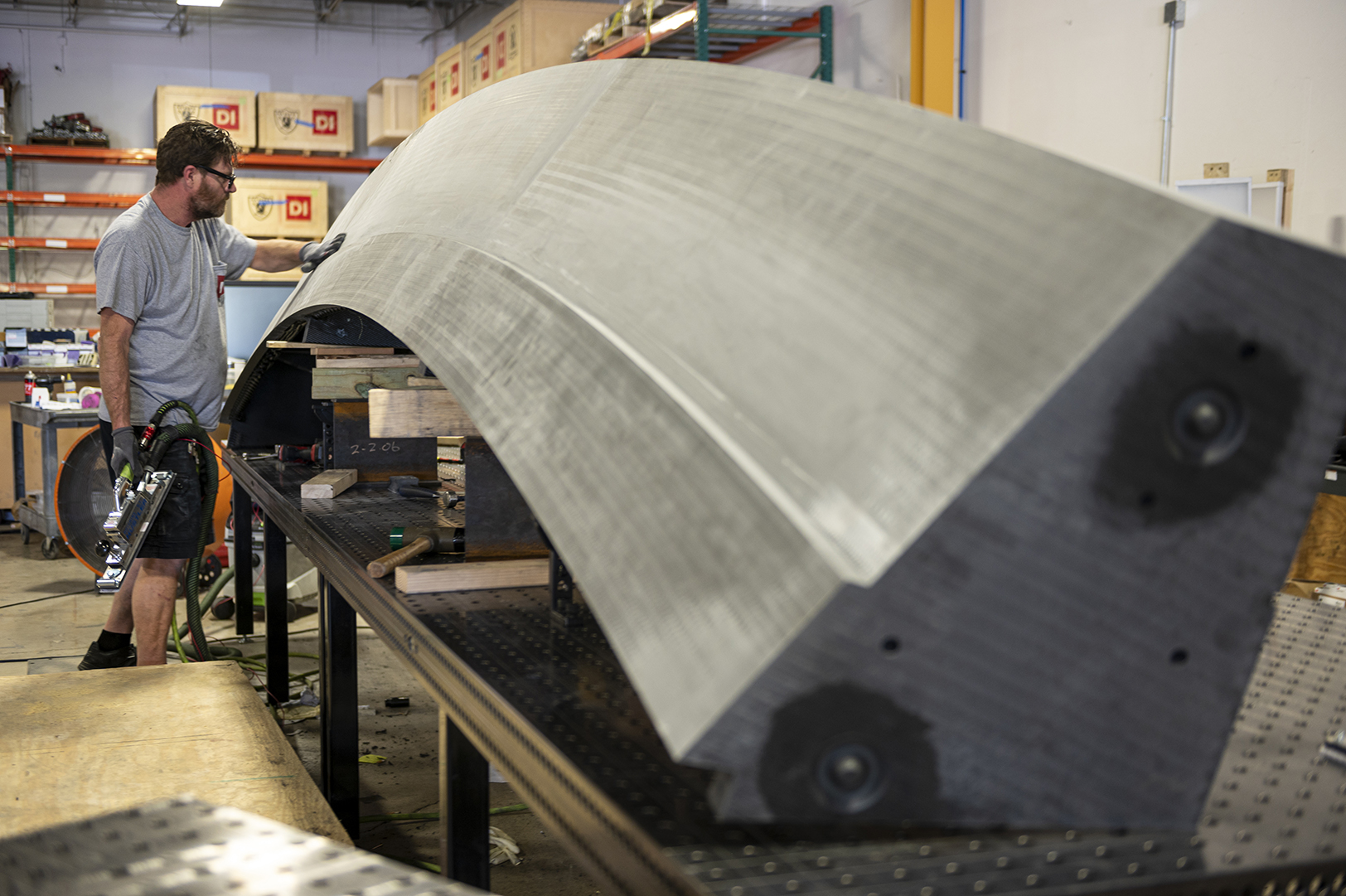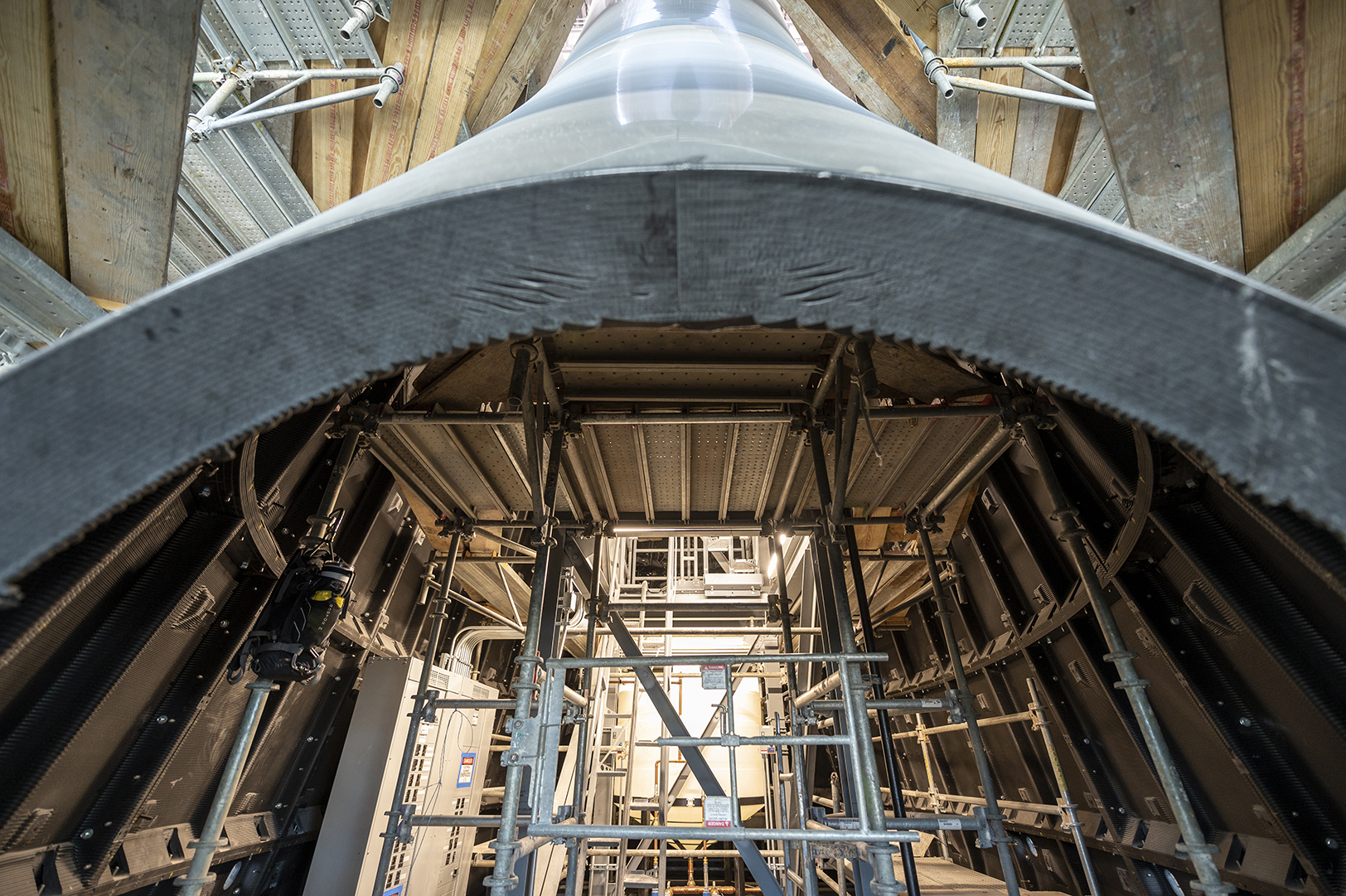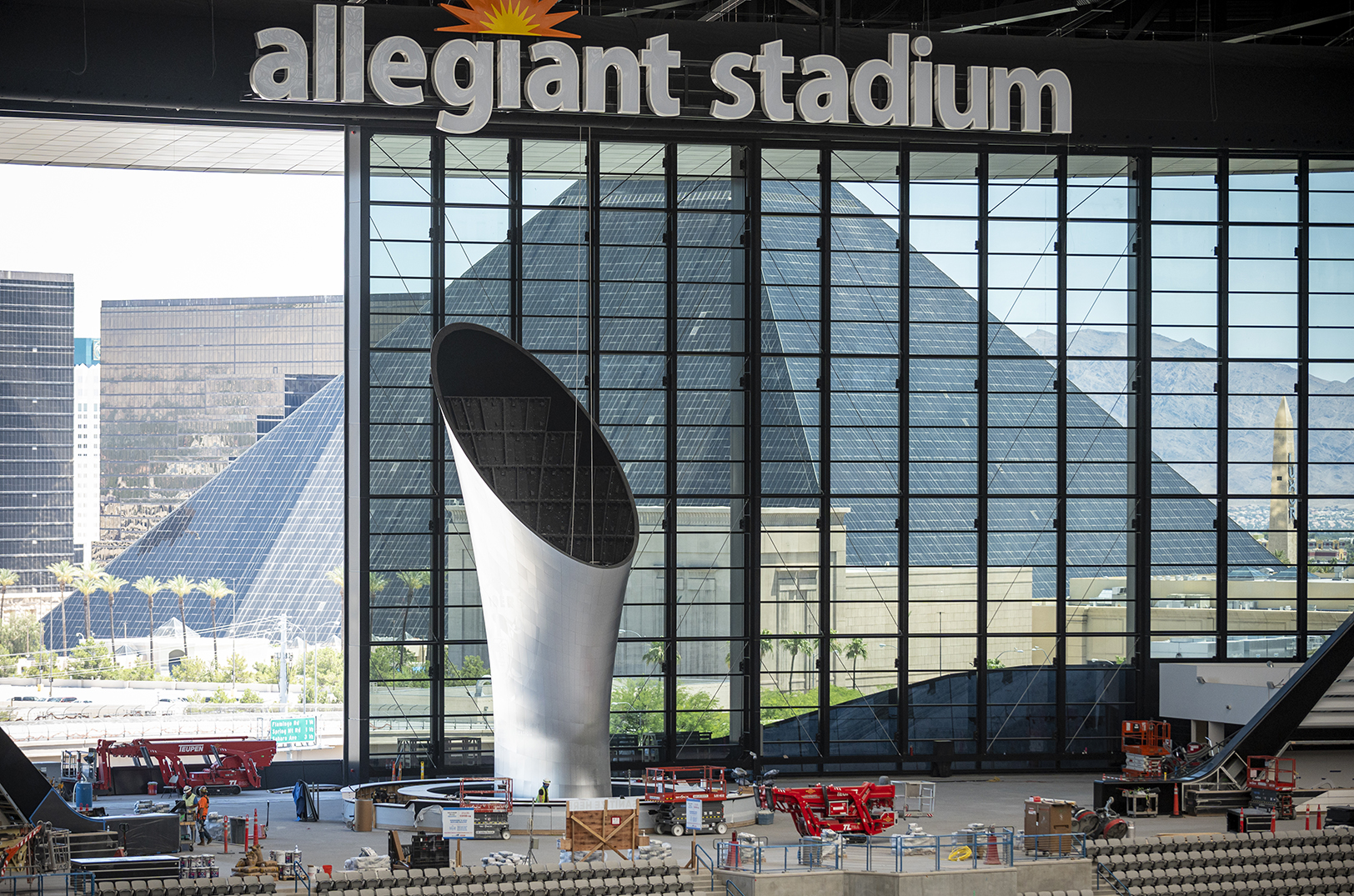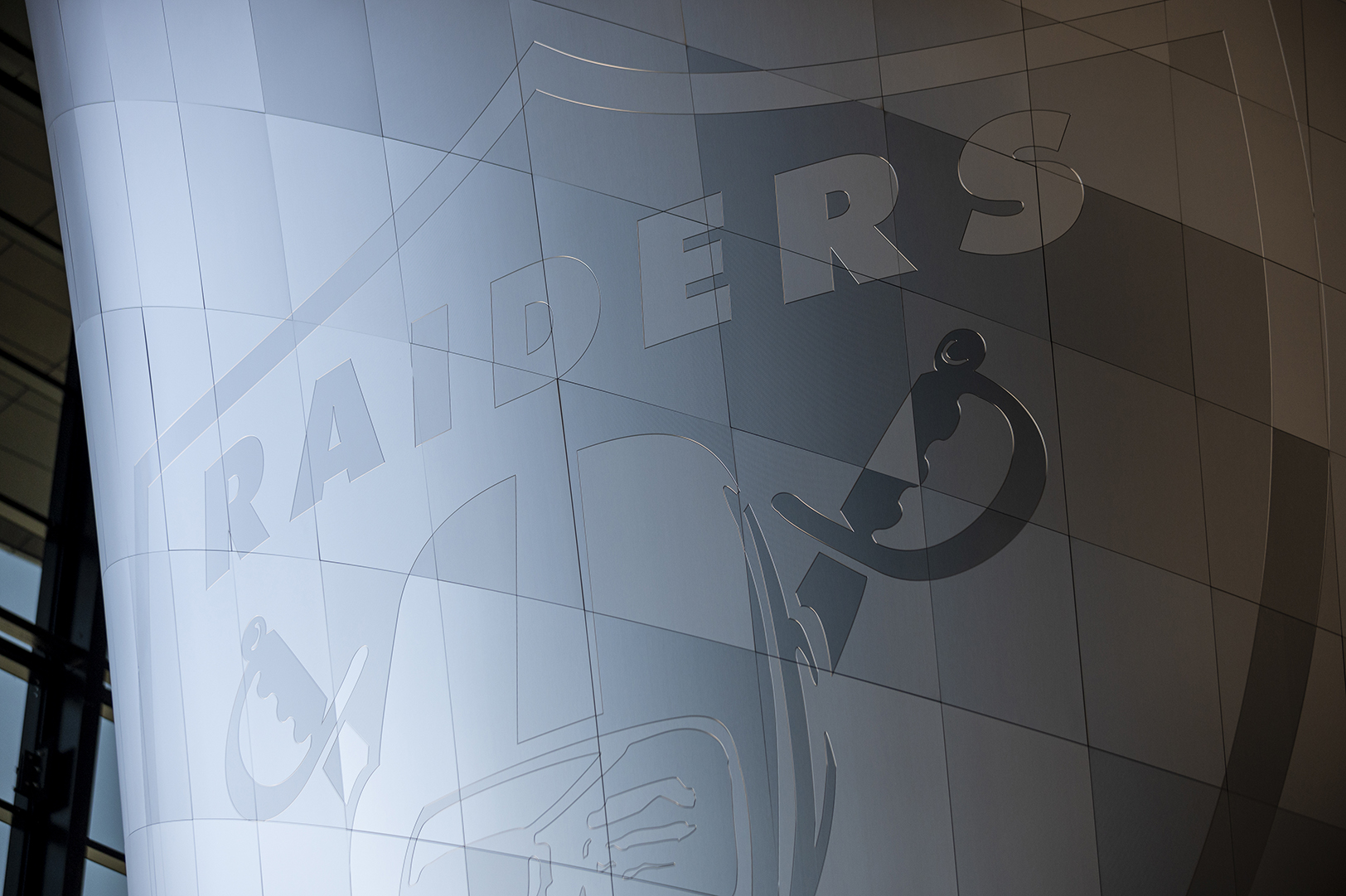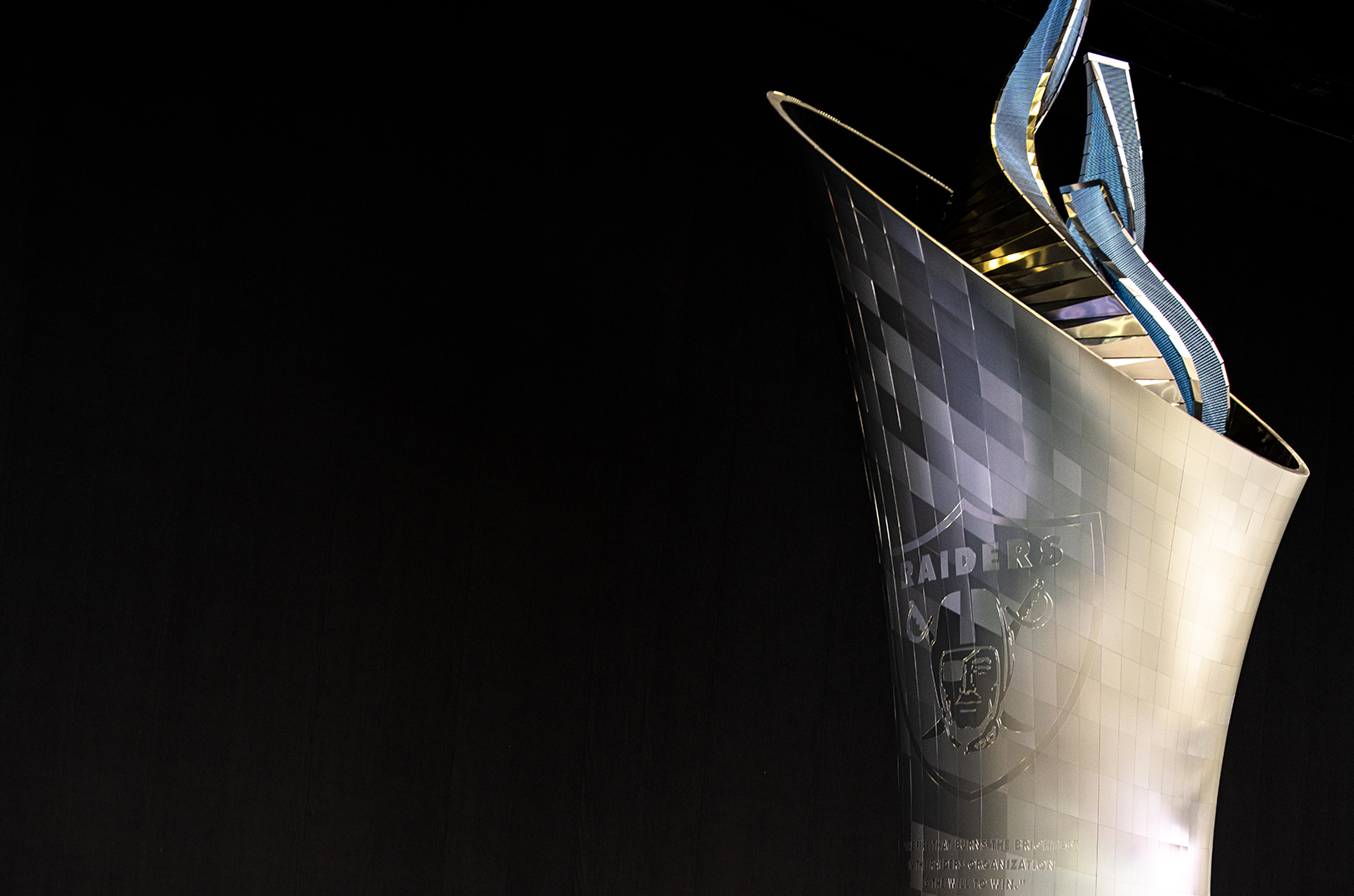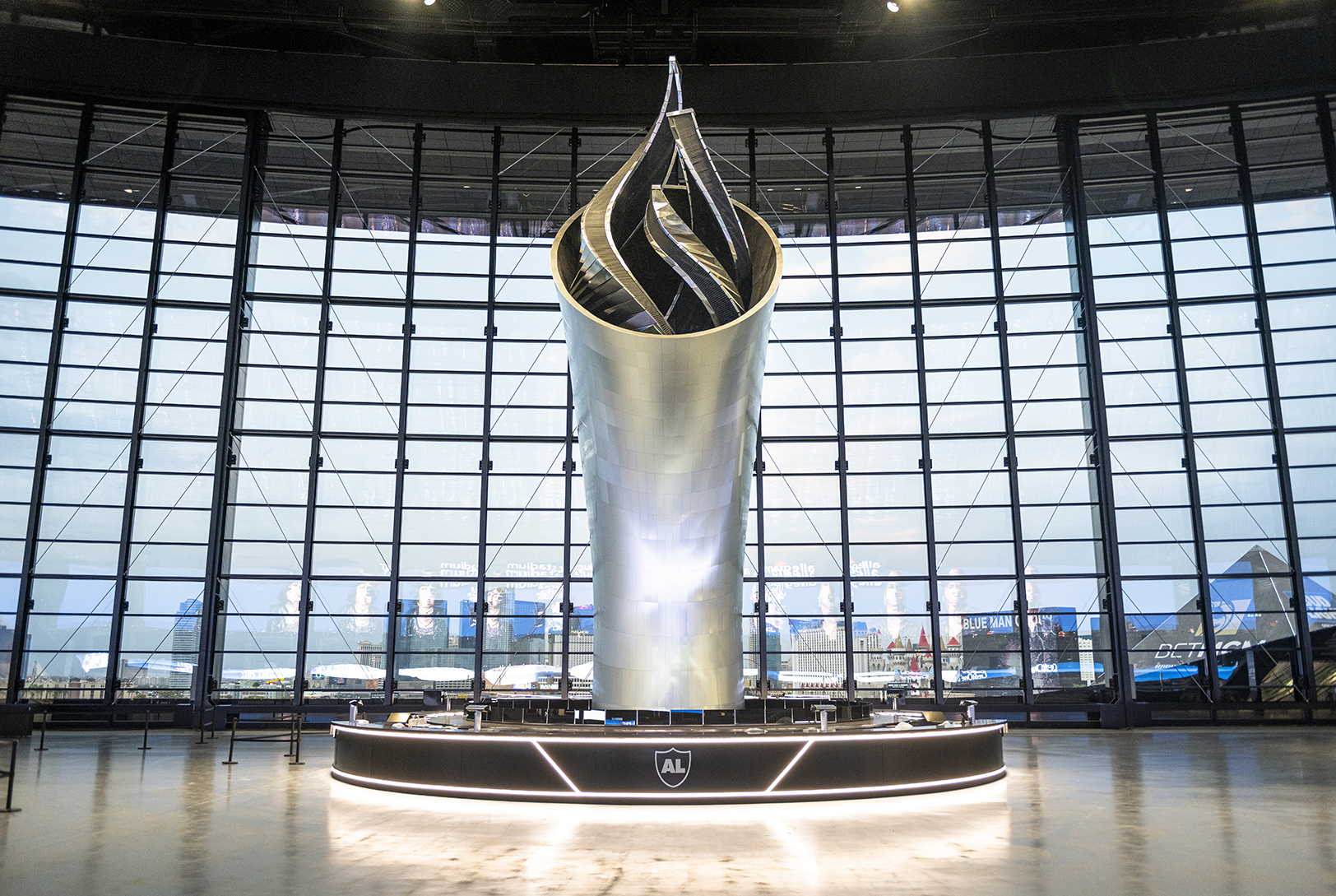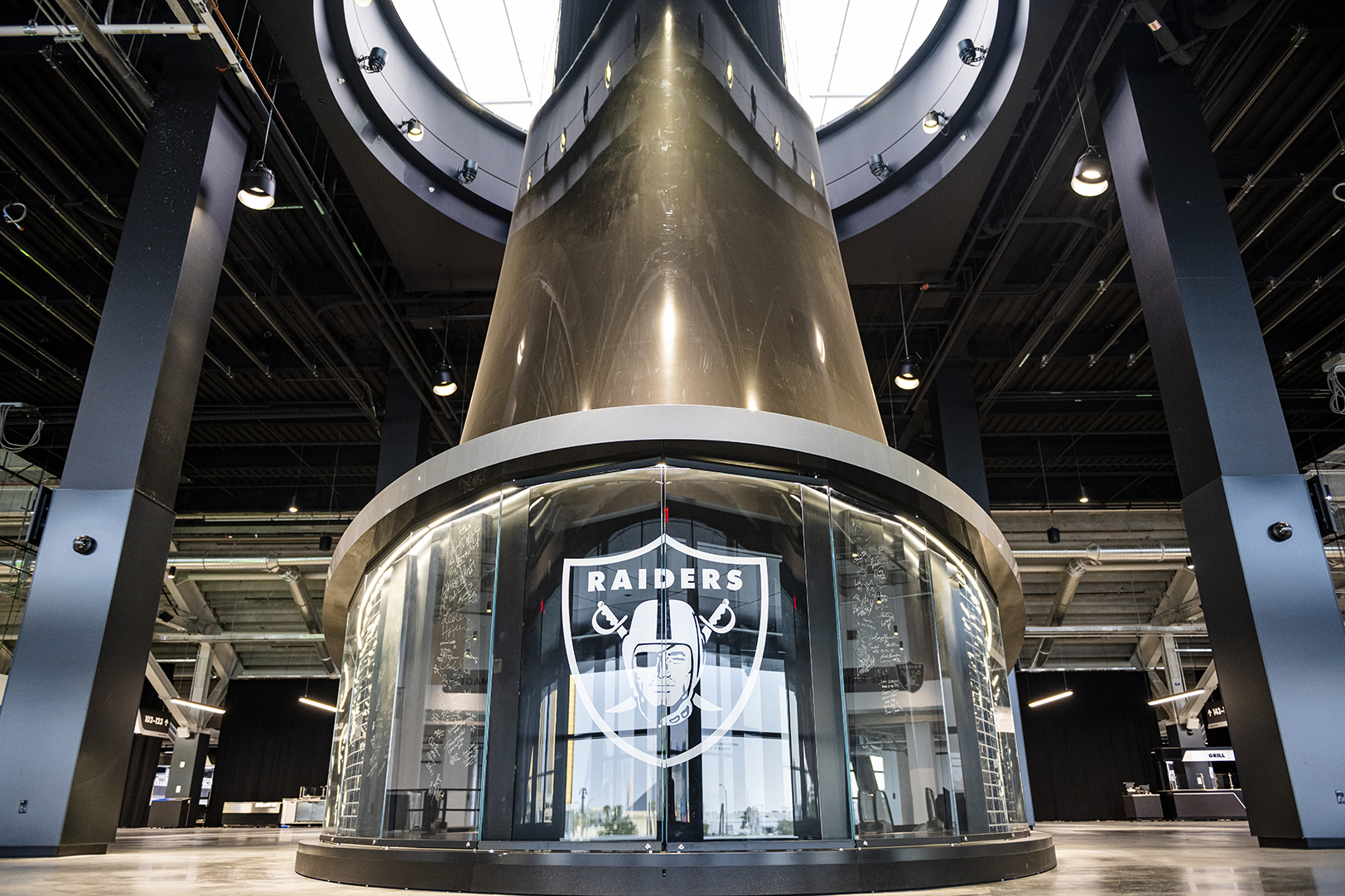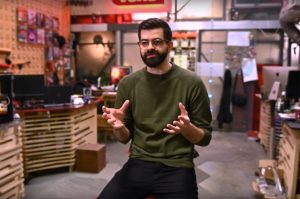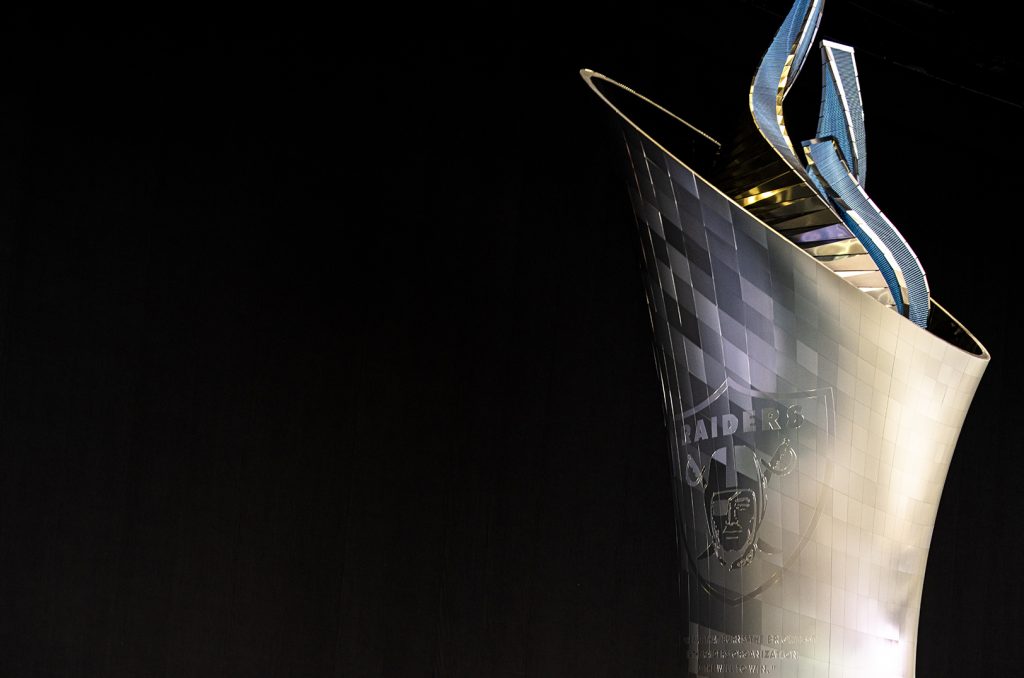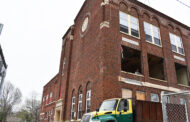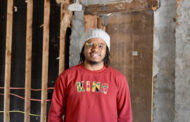Kansas City burned brightly during “Monday Night Football” this week, sharing the spotlight as the Las Vegas Raiders notched an early season victory over the New Orleans Saints.
Viewers watched Monday as the National Football League’s broadcast unveiled a closely-guarded secret: the completed Al Davis Memorial Torch — a 93-foot, 3D-printed structure built by Overland Park-based design firm Dimensional Innovations.
“It was surreal seeing it on TV,” said Brandon Wood, Innovation Lab manager for Dimensional Innovations, noting the project was three years in the making. “It took a few minutes to realize that we pulled it off. It was pretty incredible.”
The torch — displayed as the focal point of the new Allegiant Stadium in Las Vegas — was created to commemorate Al Davis, the late, long-time franchise owner of the Raiders. The team kicked off its first season in Las Vegas in 2020 after relocating from Los Angeles.
“The enormity of the torch, both physically and ideologically, will carry on the memory of Mr. Davis for years to come,” Tucker Trotter, CEO of Dimensional Innovations, said in a press release. “And we’re proud to have played a part in that.”
Over the past year, a core team of 18 Dimensional Innovations employees spent about 50,000 hours developing, creating and — after shipping its components to Las Vegas — installing the structure. Along with that team, Wood noted a larger Kansas City effort within the project.
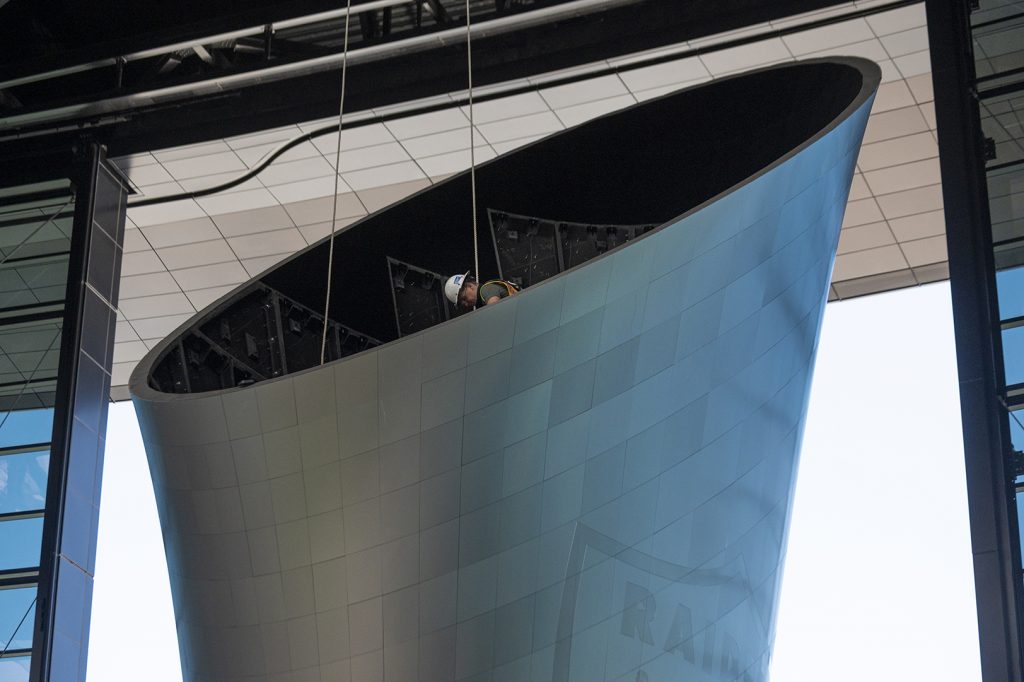
Al Davis Memorial Torch, photo courtesy of Dimensional Innovations
“We collaborated with Manica Architecture from Kansas City; they designed the look of the torch,” he explained. “We also worked with A. Zahner, and they helped us with the aluminum exterior. Then, Ultratech Aerospace is a company down the road that helped us machine all those aluminum metal parts. There’s a huge Kansas City team here that made that Raiders icon happen.”
Other collaborators included Kansas City-structural engineer Bob D. Campbell & Co., Astound Group, Purdue University, Raiders and Mark Davis, the son of the torch’s namesake, Al Davis.
“It was really cool to work with Mark Davis,” Wood said. “He had a lot of great feedback to get the design to where it is today.”
The torch’s symbolism is significant because the Raiders started a tradition of lighting the Al Davis Memorial Torch prior to every game, following his death in 2011. The torch recognizes Davis’ vision that “The fire that burns the brightest in the Raiders organization is the will to win” — an inscription featured prominently on the base and side of the nine-story-tall, 3D structure.
Davis is the only person to have served as a player, personnel assistant, assistant coach, head coach, general manager, league commissioner and the principal owner and chief executive officer of an NFL team — earning him a spot on the Pro Football Hall of Fame.
Check out the photo gallery of the structure’s creation process and completed look, then scroll down to keep reading.
World’s tallest 3D-printed structure?
With the record-setting nature of the Las Vegas torch still pending with the Guinness World Records, the team at Dimensional Innovations said it’s providing final documentation to get the title finalized.
“A lot of the large-scale, 3D-printed structures that previously held the record were test cases; people trying stuff out to see if it would work,” Wood said. “Ours is a real production object for a client, so we’re really proud of that.”
Click here to read about Dimensional Innovations’ 2019 bid to 3D print the Notre Dame spire after it was destroyed by fire.
The torch weighs more than 100,000 pounds and is constructed of 225 3D-printed blocks made of carbon fiber-reinforced polycarbonate composite, according to the company. The reflective surface of the torch contains 1,148 robotically-painted panels made from more than 35,000 pounds of raw aluminum.
Dimensional Innovations used a Large Scale Additive Manufacturing (LSAM) 3D printer and a five-axis router for the massive project. Wood noted that the LSAM printer was not developed for producing structures; yet, Dimensional Innovations was the first company to apply the tool to build a finished architectural structure.
Click here to read about other innovative projects from Dimensional Innovations.




